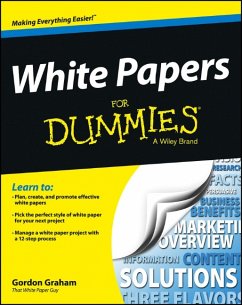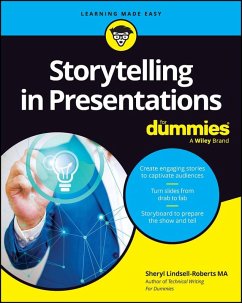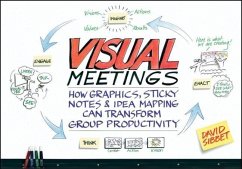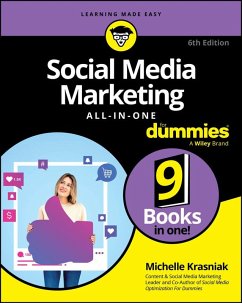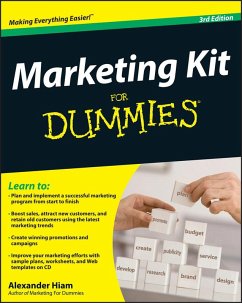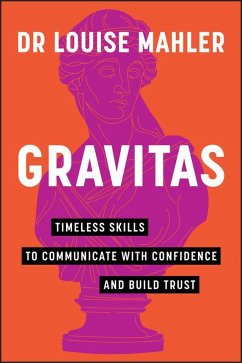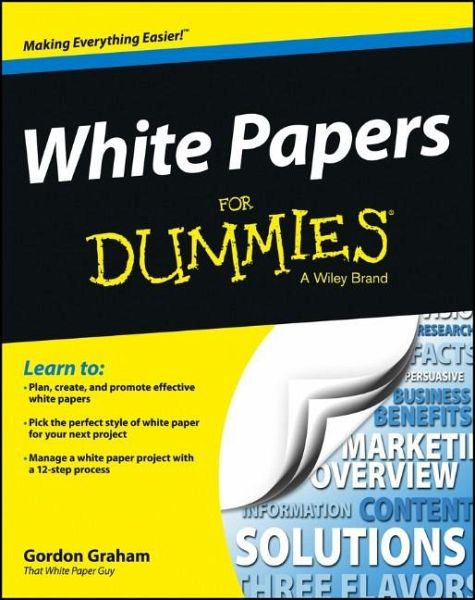
White Papers For Dummies (eBook, PDF)
Versandkostenfrei!
Sofort per Download lieferbar
19,99 €
inkl. MwSt.
Weitere Ausgaben:

PAYBACK Punkte
0 °P sammeln!
A fast and easy way to write winning white papers!Whether you're a marketing manager seeking to use white papers to promote your business, or a copywriter keen to break into this well-paying field, White Papers For Dummies gives you a wealth of practical, hands-on advice from one of the world's leading experts in the field.The fact-based documents known as white papers have been called the "king of content." No other B2B marketing piece can do more to generate leads, nurture prospects, and build mindshare.Where white papers were once used only by technology firms, they are becoming "must-have"...
A fast and easy way to write winning white papers!
Whether you're a marketing manager seeking to use white papers to promote your business, or a copywriter keen to break into this well-paying field, White Papers For Dummies gives you a wealth of practical, hands-on advice from one of the world's leading experts in the field.
The fact-based documents known as white papers have been called the "king of content." No other B2B marketing piece can do more to generate leads, nurture prospects, and build mindshare.
Where white papers were once used only by technology firms, they are becoming "must-have" items in the marketing toolkit for almost any B2B firm. Practically every startup must produce a white paper as part of its business planning.
But writing effective white papers is a big challenge. Now you can benefit from the experience of a white paper specialist who's done more than 200 projects for clients from Silicon Valley to Finland, from mighty Google to tiny startups. Author Gordon Graham-also known as That White Paper Guy-provides dozens of tips and tricks to help your project come together faster and easier.
White Papers For Dummies will help you to:
Whether you're a marketing manager seeking to use white papers to promote your business, or a copywriter keen to break into this well-paying field, White Papers For Dummies gives you a wealth of practical, hands-on advice from one of the world's leading experts in the field.
The fact-based documents known as white papers have been called the "king of content." No other B2B marketing piece can do more to generate leads, nurture prospects, and build mindshare.
Where white papers were once used only by technology firms, they are becoming "must-have" items in the marketing toolkit for almost any B2B firm. Practically every startup must produce a white paper as part of its business planning.
But writing effective white papers is a big challenge. Now you can benefit from the experience of a white paper specialist who's done more than 200 projects for clients from Silicon Valley to Finland, from mighty Google to tiny startups. Author Gordon Graham-also known as That White Paper Guy-provides dozens of tips and tricks to help your project come together faster and easier.
White Papers For Dummies will help you to:
- Quickly determine if your B2B firm could benefit from a white paper
- Master the three phases of every white paper project: planning, production, and promotion
- Understand when and how to use the three main types of white paper
- Decide which elements to include and which to leave out
- Learn the best practices of seasoned white paper researchers and writers
- Choose from 40 different promotional tactics to get the word out
- Avoid common mistakes that many beginners make
Dieser Download kann aus rechtlichen Gründen nur mit Rechnungsadresse in D ausgeliefert werden.




